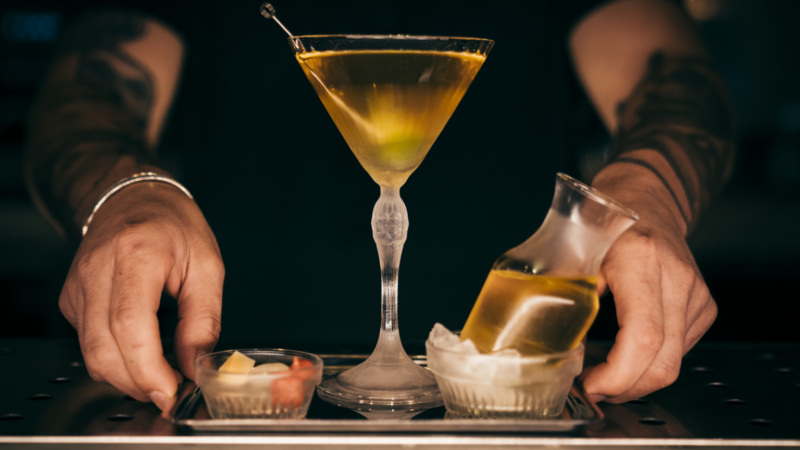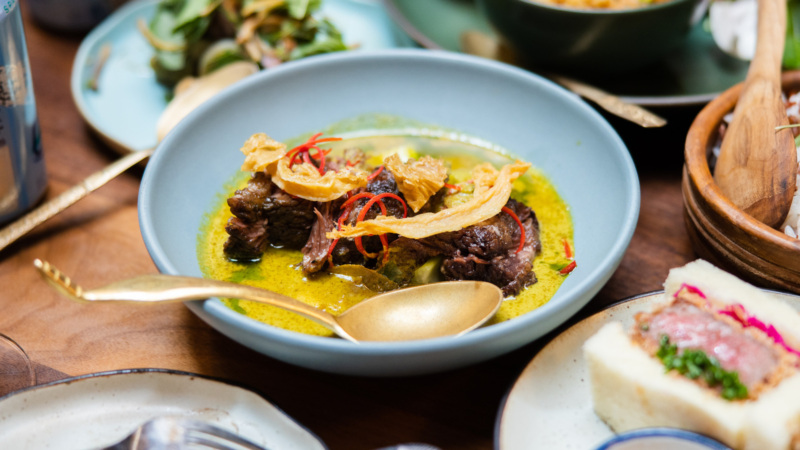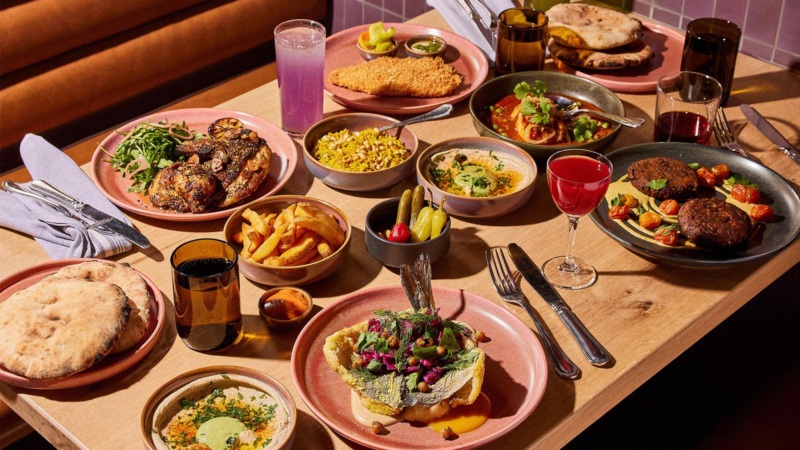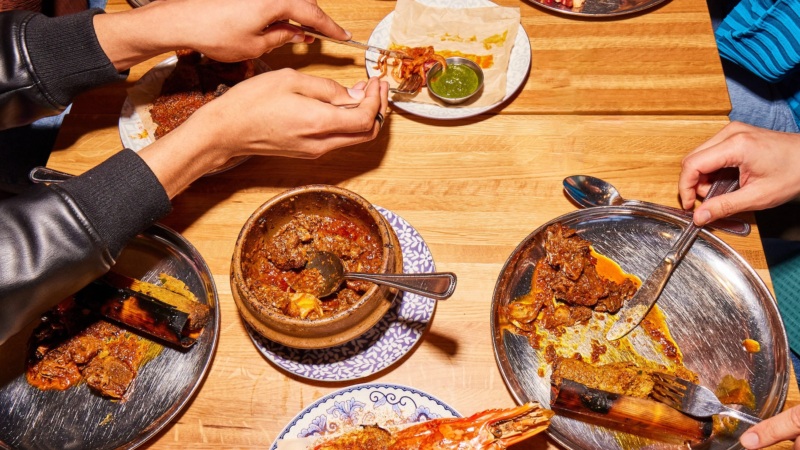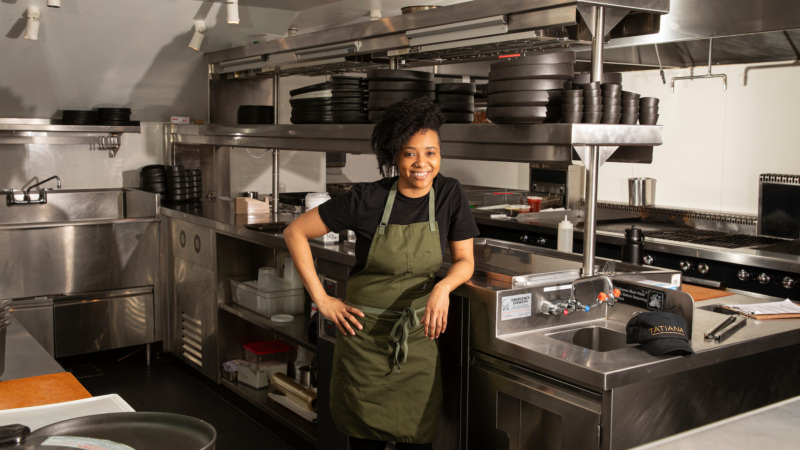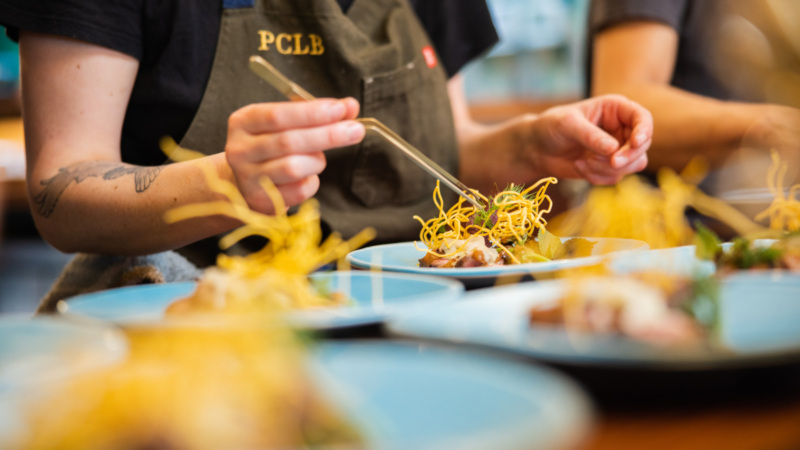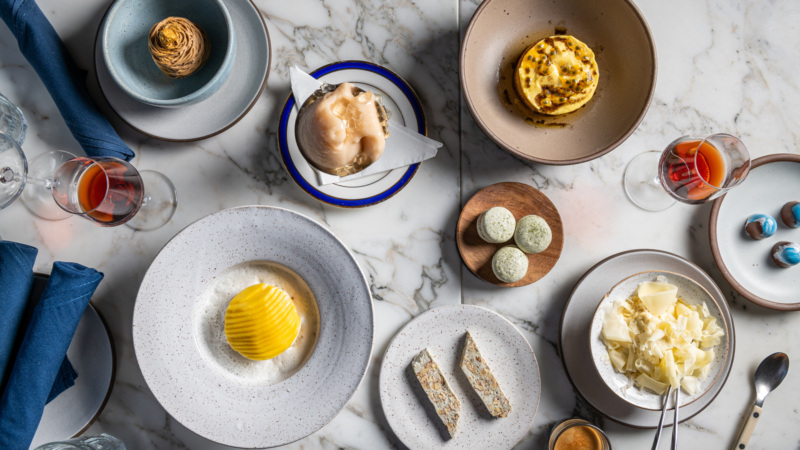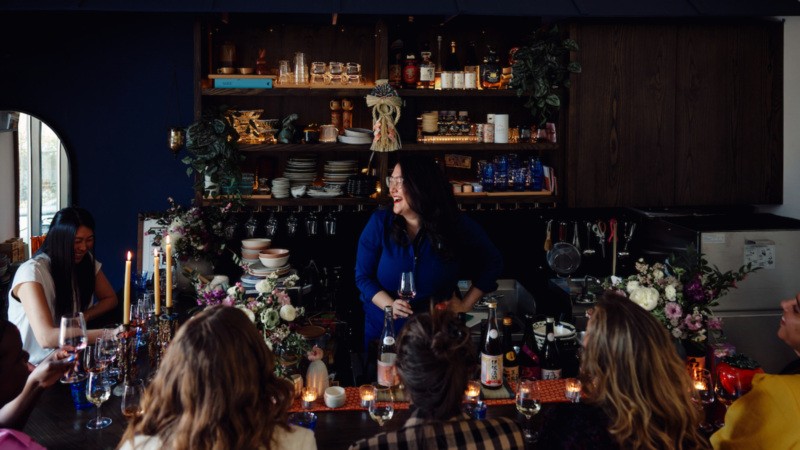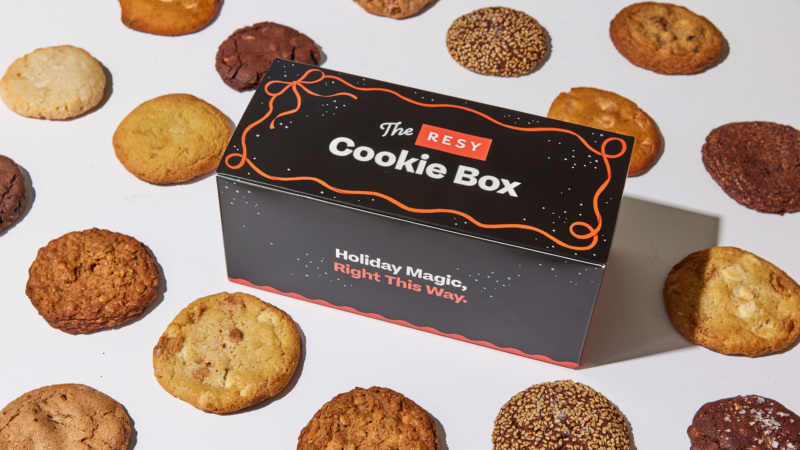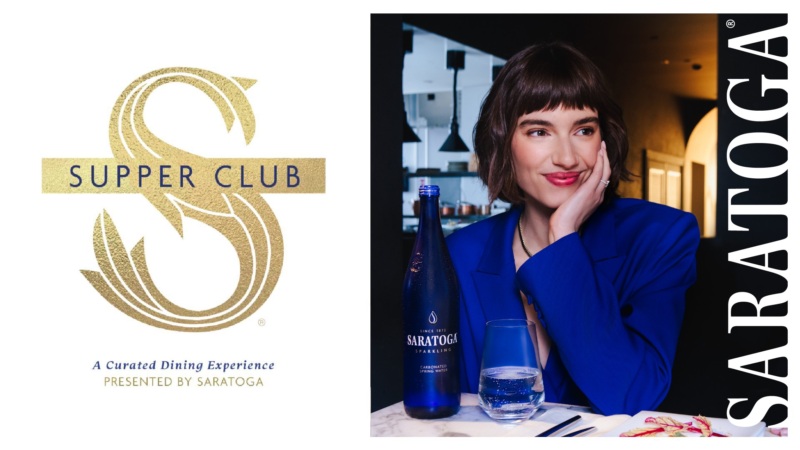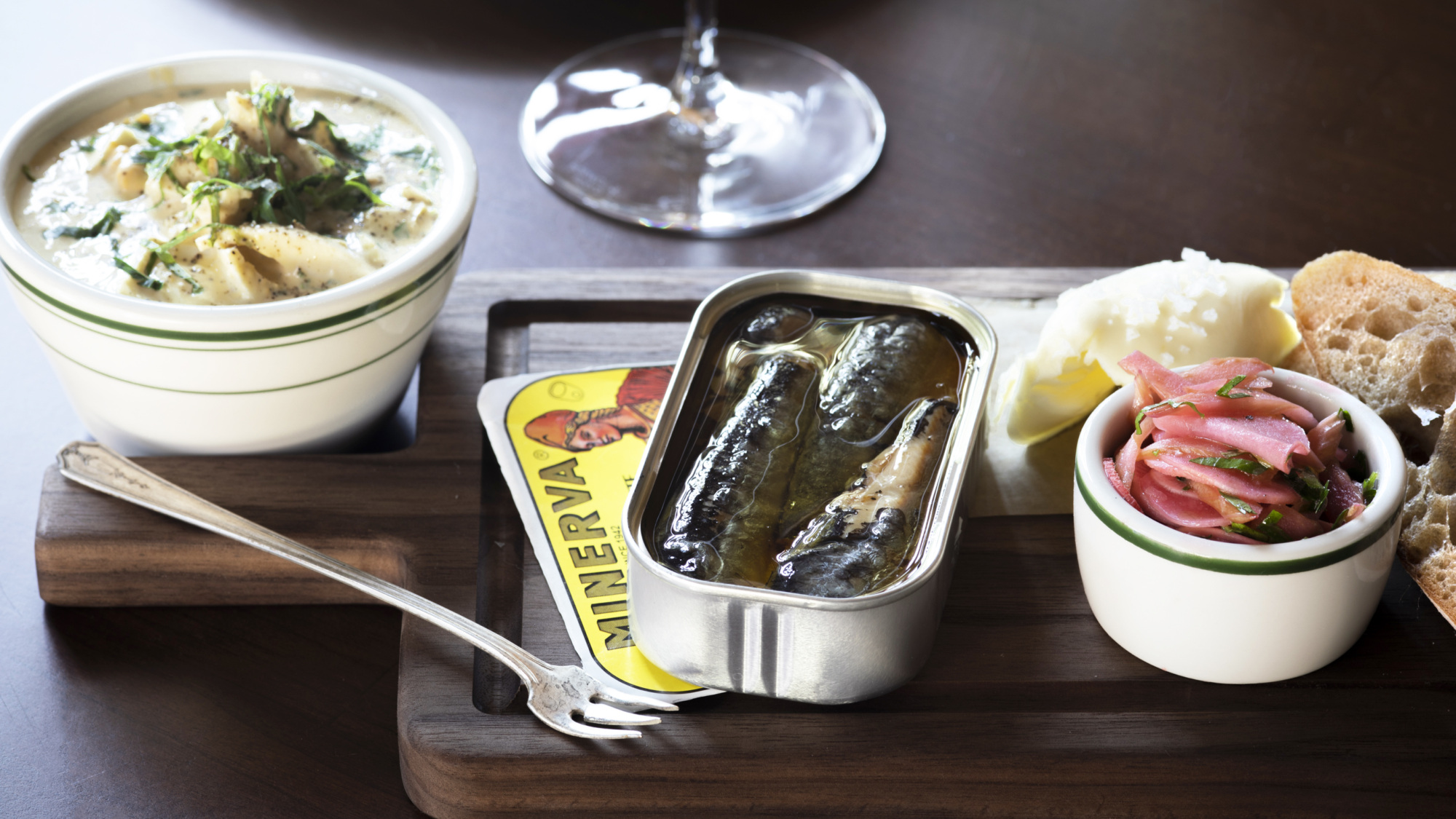
Resy Features National Los Angeles
The Future of Tinned Fish Is Now, in a Restaurant Near You
It’s Saturday night at Kippered, a self-described “tinned fish and Champagne bar” in Downtown Los Angeles, and the low-lit jewelbox of a space hums with activity. Co-owner Lydia Clarke flutters through the room, refilling slender flutes with sparkling wine and growing animated as she describes the perfume of juniper berries lacing the small tin of trout she’s presenting to a two-top.
This scene has become surprisingly commonplace, not just in L.A. but coast to coast. Some of the buzziest restaurants in the country are drawing customers with a centuries-old preservation technique — but this one, unlike the Noma-driven fermentation craze of years past, requires no more culinary finesse than popping open a tin. Restaurants like Maiden Lane and Le Dive in New York, Saltie Girl in Boston, and Bar Moruno in Los Angeles, specialize in tinned seafood, often importing dozens, if not hundreds, of varieties from around the world. (Saltie Girl, which recently opened a new outpost in Los Angeles, has over 130 tins on offer). This reflects a craving for at home, one that catalyzed enough to make it the official “hot girl food” of the pandemic. That trend, though, has proved to have serious staying power as well, moving beyond panic-induced pantry trend and into an estimated $11 billion market by 2027.
But in restaurants? Indeed, fancy tinned fish is finding a home alongside artisan bedfellows like natural wine and charcuterie as a handcrafted good worth a premium markup to enjoy outside of the confines of your own kitchen. “We’re a tiny little neighborhood bar in a quiet part of Downtown, and when we first opened, I thought I’d ordered enough tinned fish to get us through the first year. I thought I was going to be going through cases of wine and Champagne. But I had no idea — people are like, yes, I’ll drink this, but give me the fish! I had to order more tins the very next month,” Clarke says.
In truth, canned fish has been around for centuries, emerging in the late 1700s as a convenient way to feed French military forces, and later adopted and arguably perfected by Spanish and Portuguese packagers. This is to say nothing of the many beloved tinned fish products from Asia, South America, and beyond. But why, after decades of relative neglect in the American dining imagination, is tinned fish suddenly the most chic thing on the menu? And where does it go from here?
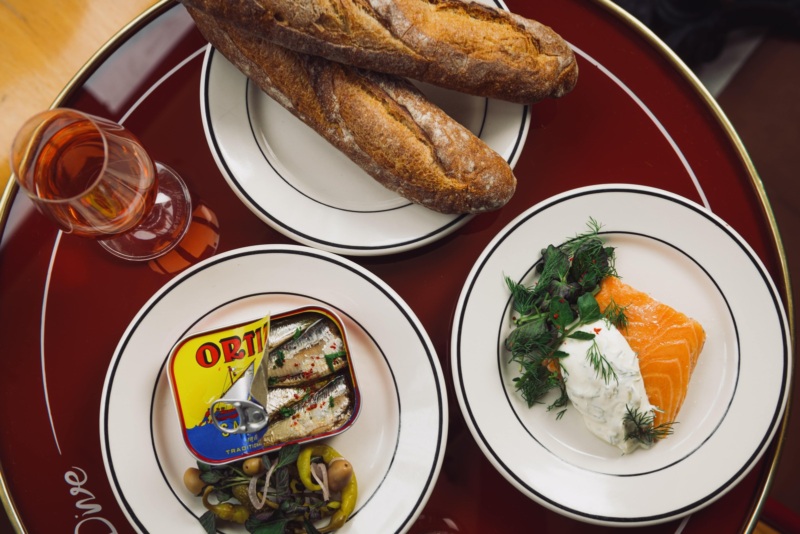

The answer is likely a combination of convenience, aesthetics, and taste. Shelf-stable tinned fish keeps for years, and requires very little space or skill in the kitchen. Restaurants can keep their labor cost low and their profit margin high; it doesn’t hurt that many of the most coveted tins from Spain and Portugal are packaged in eye-catching, highly grammable tins that can double as décor in a pinch.
And, it should go almost without saying, but this is not your grandmother’s chicken of the sea. Although mass-marked canned fish producers like Bumble Bee are attempting to capitalized on the trend (“It’s possible to have a gourmet experience with a can of tuna,” Bumble Bee’s brand marketing director insisted to the Wall Street Journal), the tins you’re likely to find on menus like Kippered and Saltie Girl’s are typically made by hand, and priced accordingly.
Though fishing, production, and packaging methods vary by the brand and species, “the one universal statement you can make about premium tinned seafood is that the process is far more manual than anyone could ever imagine,” says Becca Millstein, the co-founder of upstart tinned fish company Fishwife, a millennial favorite for smoked rainbow trout, wild-caught albacore, and chile oil-laced smoked salmon that’s available retail and on the menus at Saltie Girl, Maiden Lane, and The London Plane in Seattle, among others. “There is a level of intricacy to making this fish that a machine just cannot replicate.”
While most of Fishwife’s cans clock in around $10 each, some of the tins on offer at Saltie Girl cost upwards of $60, and Saltie Girl owner Kathy Sidell says the price is absolutely worth it: “The quality is so incredible,” she says of a $66 tin of Güeyu Mar grilled tuna neck from Spain. “You’ve never had an experience like this with any tuna you’ve ever tasted anywhere. I think people that are interested in having a unique kind of culinary experience are really happy to pay for it, because it delivers,” she says.
Sidell fell in love with tinned fish on a formative trip to Spain years ago. It didn’t hurt that her first location in Boston initially lacked a hood, so no-cooking-required tins fit the requirements of the space. In the eight years since, she has seen a marked shift in how Americans approach tinned seafood. “All of the sudden, we’re introducing tins to people and they’re telling us they’re hooked, no pun intended, because they’re healthy, they’re satisfying, and they’re delicious.”


Sidell says the biggest challenge at this point is not getting her customers to embrace tinned fish: it’s educating them on the nuances of the product. “The word is out there now. And the truth is, you have to be like a sommelier. You have really got to know your product, because people want to know which combination of tins to get, or whether to have this one versus that one, or how to pair it with other dishes or drinks.” She is currently in the process of adding more in-depth descriptions to her tin menu to aid guests in their selections, potentially with hand-drawn illustrations detailing her favorites.
Clarke is a trained cheesemonger with a background in food retail. She sees storytelling as a part of the appeal of the tinned seafood experience, much as it is for wine or cheese. “I learn about every tin we sell, and I get to tell you about the waters this fish is swimming in, who their buddies are that they’re swimming alongside, why it tastes like this, and so on. It’s cool that I get to share that as the proprietor; it’s really cool to come in [as a customer] and get to know the whole story.”
Clarke often guides customers through tinned fish and wine pairings, but offers few hard and fast rules, preferring instead conversation and exploration. “It’s something educational, but in a really magical and beautiful way. You know, you get to learn about something because you ate it and it tasted good. With tins, it’s like, wow, I’m prettier and smarter for having eaten this.”
The truth is, you have to be like a sommelier. You have really got to know your product.— Kathy Sidell, owner, Saltie Girl
The continuing tinned fish ascendancy could change the model for restaurateurs like Sidell, though for now, she’s just excited that people are coming to appreciate the stuff. “10 years from now, maybe people will be able to get [tinned fish] so easily that they won’t need to come into a restaurant for it. Who knows?” she muses. The parallels to other artisan groceries that have taken up permanent residence on restaurant menus is not lost on her, though she’s not overly concerned about losing a core part of her business. “Yes, you can go and buy cheese anywhere. But it feels somehow very special to go and have it somewhere else, where it’s been curated just for you,” she says.
Clarke is unfazed: “Even if tinned fish is in everybody’s home in the future, whether that makes it less exclusive or not, it’s still going to be exciting to eat out — there’s nothing like not doing your own dishes.”
Jamie Feldmar is Resy’s Los Angeles editor and a five-time cookbook author. Follow her @jfeldmar, and while you’re at it, follow Resy too.












